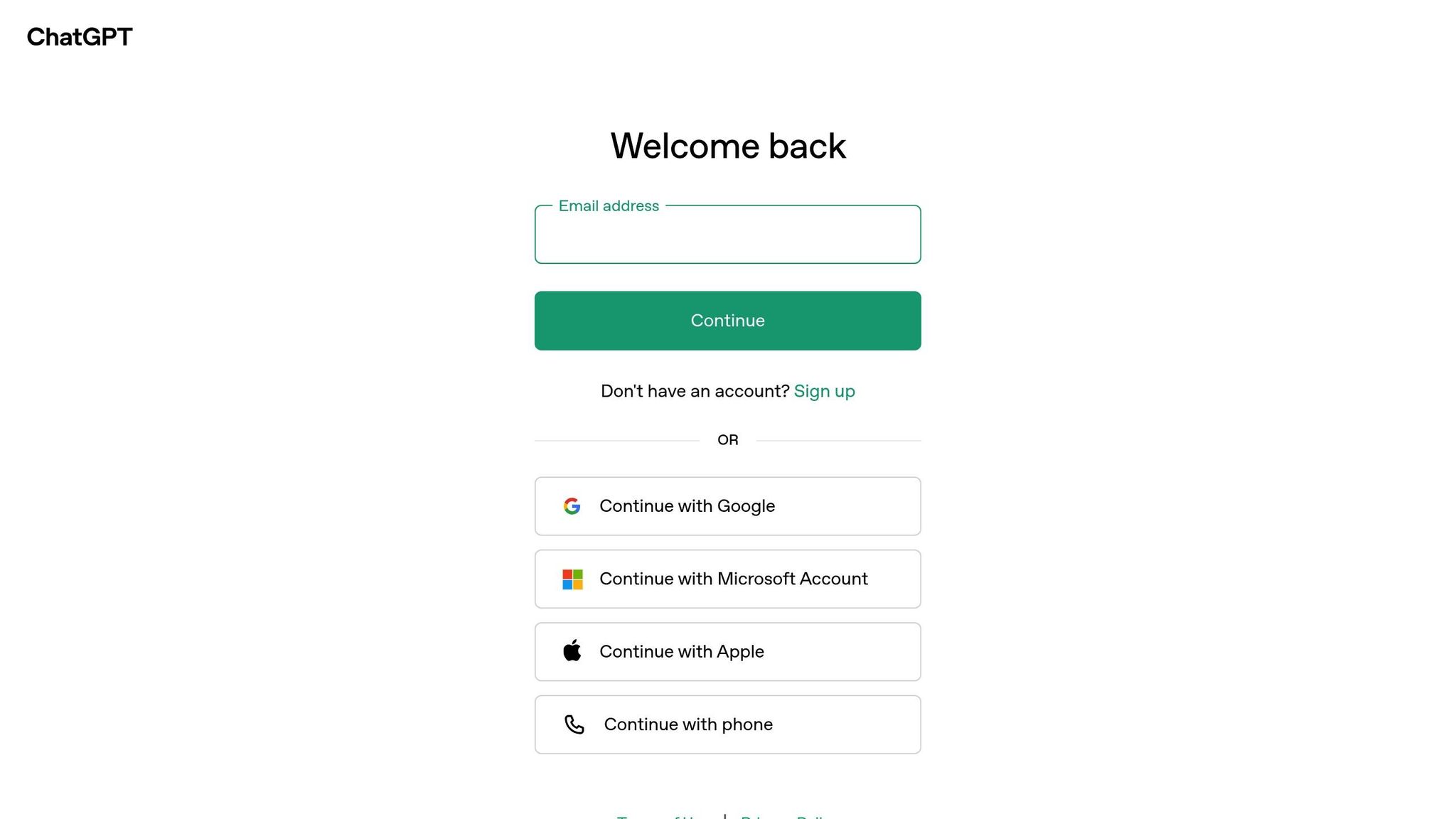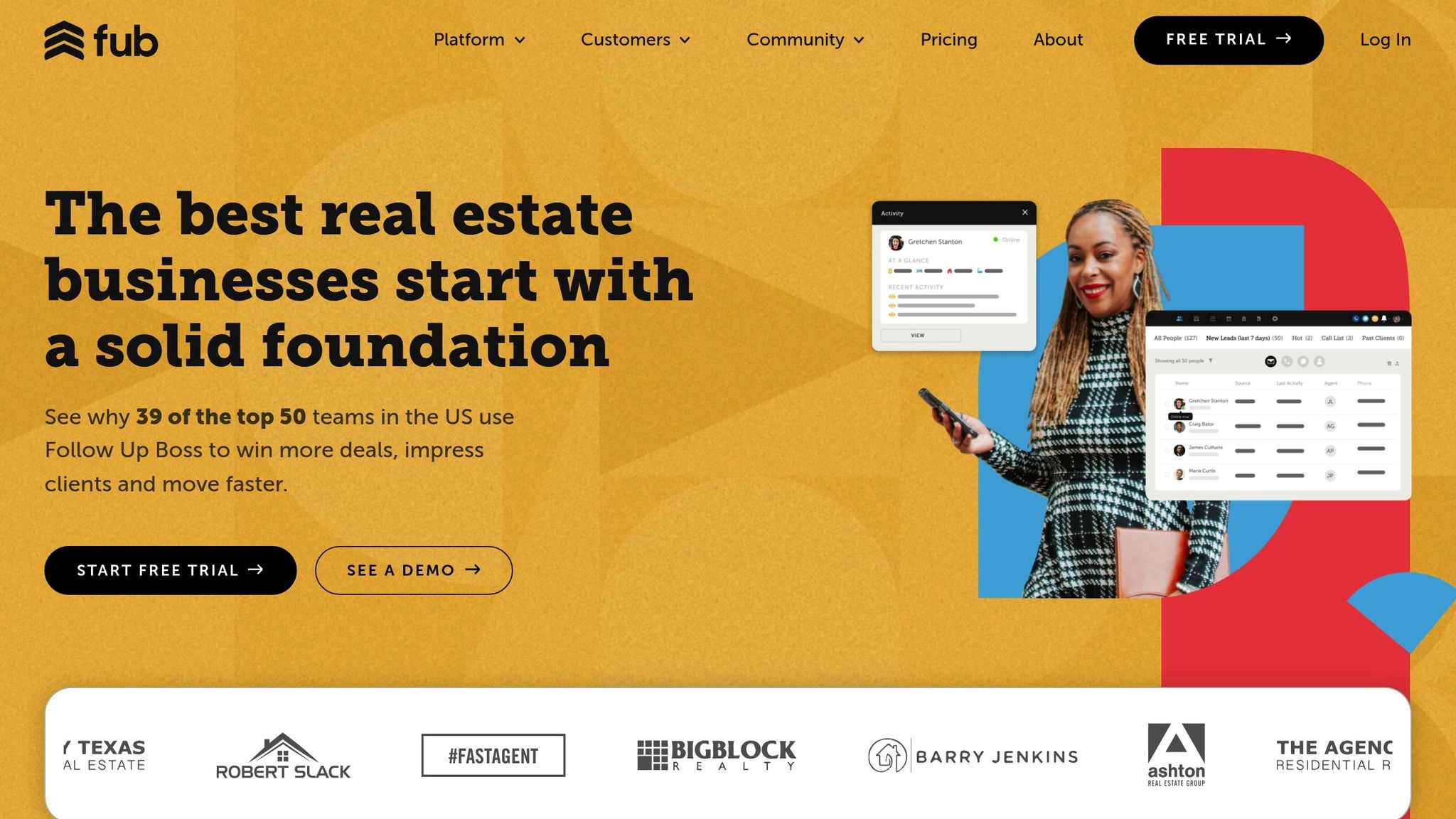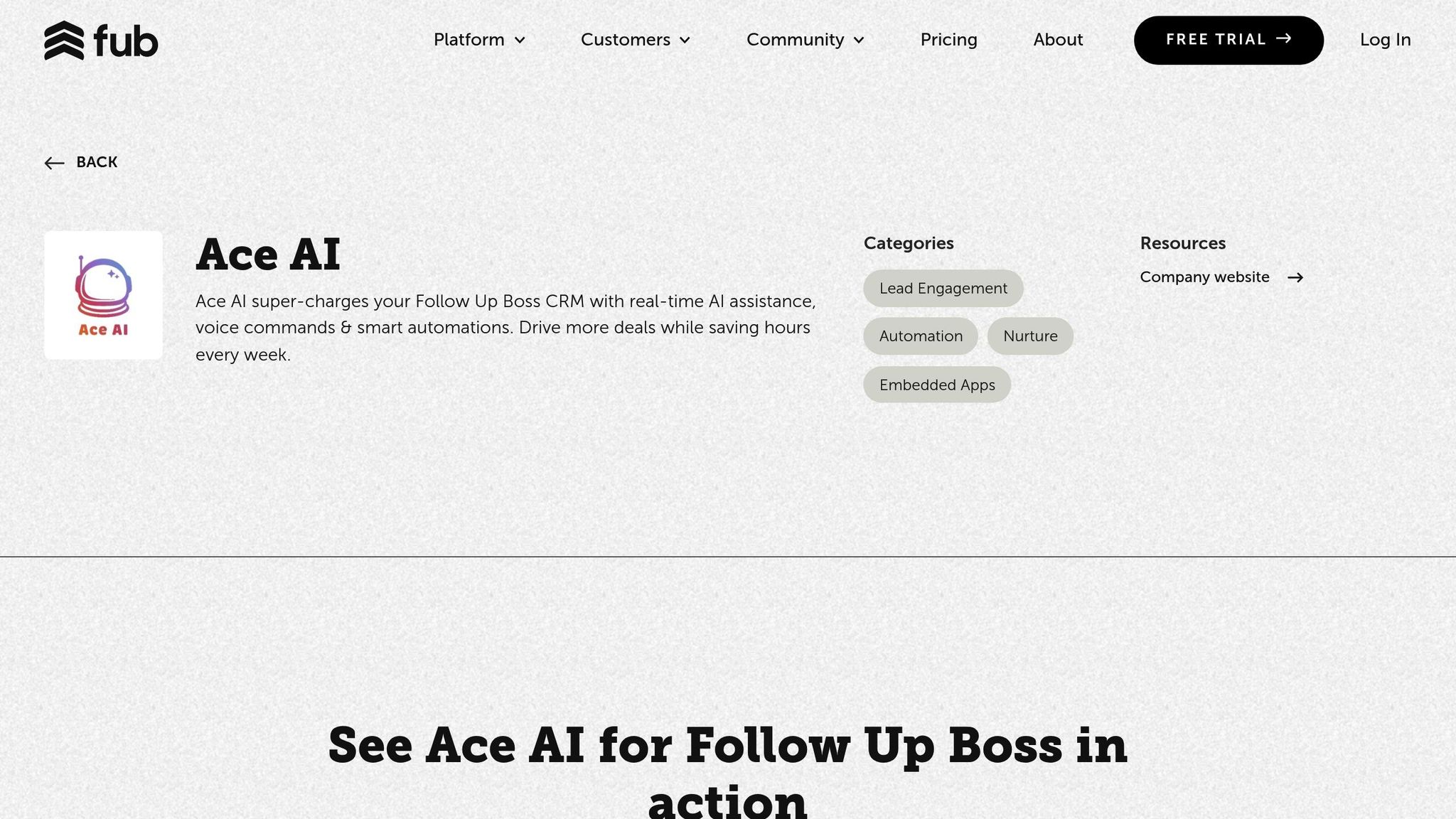How Predictive Insights Improve Lead Follow-Ups
Nearly 50% of real estate leads are never followed up on, costing agents millions in lost revenue. Traditional methods like manual tracking and spreadsheets fail to keep up with today’s fast-paced market. Predictive insights, powered by AI, change the game by identifying high-priority leads, automating follow-ups, and improving response timing.
Key Takeaways:
- AI-Powered Lead Scoring: Focus on leads most likely to convert, saving time and boosting efficiency.
- Automated Follow-Ups: Respond faster with tools like Ace AI, which analyzes behavior and engagement data.
- Improved Timing: Reach leads when they’re most likely to engage, increasing conversion rates.
- Real Results: Companies using predictive insights report up to 2.3x higher conversion rates and 35% lower marketing costs.
By integrating tools like Ace AI into platforms like Follow Up Boss, agents can prioritize leads, automate tasks, and close more deals - all while saving time and effort.
How To Use ChatGPT for Predictive AI Lead Scoring

How Predictive Insights Work in Follow Up Boss

Predictive insights in Follow Up Boss transform your lead management approach by analyzing data and turning it into actionable recommendations. Instead of reacting to leads as they come, you can take a proactive stance by focusing on the ones most likely to convert.
What Are Predictive Insights?
Predictive insights rely on AI-driven analytics to forecast outcomes using historical data, statistical models, data mining, and machine learning. In the real estate world, these tools analyze lead behaviors to predict how ready a buyer or seller might be, helping you fine-tune your follow-up strategies.
Follow Up Boss employs behavioral tracking to identify high-priority leads based on their engagement patterns. In simple terms, the system monitors how leads interact with your communications - things like email opens, property views, or inquiries - and assigns priority scores based on their likelihood to convert. This way, you can focus your time and energy on the leads that matter most, instead of treating all prospects the same.
Here’s how it works: the system examines patterns from past successful transactions and applies those insights to current leads. For example, if data shows that past clients who viewed properties multiple times online were more likely to schedule a showing, the system will flag similar behaviors in your current leads, marking them as high-priority.
Data Points Used for Predictions
To make accurate predictions, Follow Up Boss looks at a variety of data points. These include CRM engagement history, website activity, IDX search behavior, marketing metrics, and even local market trends. Together, these data points create a detailed picture of each lead’s potential.
| Data Type | What It Reveals | Predictive Value |
|---|---|---|
| Email engagement | Interest metrics | Level of intent |
| Property inquiries | Buyer preferences | Criteria for purchases |
| Communication history | Contact patterns | Readiness to buy or sell |
| Appointment scheduling | Action steps | Likely transaction timing |
For instance, email engagement shows how interested a lead is, while property inquiries give insights into their preferences. Communication history helps identify the best timing for follow-ups, and appointment scheduling sheds light on when a transaction might occur. This strategic timing takes the guesswork out of your follow-up process.
How Ace AI Powers Predictive Insights

Ace AI takes these predictive insights to the next level by integrating directly with your CRM. It analyzes client history, communication patterns, and engagement data to provide clear, actionable recommendations.
Launched in November 2024 by Austin Archuleta, Ace AI was designed to tackle the specific challenges real estate professionals face with lead management. The tool offers features like automated lead summaries, instant re-engagement emails, and tailored next-step suggestions based on each lead’s activity and profile.
"Ace AI - bringing an AI assistant directly into the CRM, where agents already live and work. No more context switching, no more copy-pasting, just seamless AI assistance that actually understands your entire client history." - Austin Archuleta
What makes Ace AI stand out is its deep integration with Follow Up Boss. Unlike standalone analytics tools, Ace AI taps into your complete lead history, communication records, and behavioral data to generate highly accurate predictions. This means it doesn’t just provide insights - it gives you specific, targeted recommendations for each lead. For example, it can instantly review a lead’s engagement history and suggest the best follow-up approach.
Studies show that 64% of sales professionals save between one to five hours per week by using AI to automate manual tasks. With Ace AI, you’re not just saving time - you’re making smarter, data-driven decisions about where to focus your efforts for the best results.
Using Predictive Insights to Prioritize Leads
Automated scoring systems can help you zero in on high-value prospects. By using predictive tools, you can quickly sort leads into categories, making it easier to focus on those ready to act while nurturing others who need more time. Let’s dive into how automated scoring and tagging can simplify this process and boost your efficiency.
Automated Lead Scoring and Tagging
Predictive lead scoring relies on AI to analyze large volumes of customer interactions, identifying patterns that suggest a strong likelihood of conversion. This system creates an Ideal Customer Profile (ICP) based on data from your most successful deals. New leads are then scored against this profile - the closer a lead aligns with your ICP, the higher their score. As prospects interact with your content, website, or communications, their scores are updated automatically.
For example, Follow Up Boss assigns numerical scores and tags like "Hot Lead", "Warm Prospect", or "Cold Lead" based on several factors. These scoring models are dynamic, constantly evolving as new data comes in, which makes their assessments increasingly accurate over time. This allows you to identify high-potential prospects earlier in their journey - sometimes even before they’ve reached out to your sales team.
Using Tags to Customize Follow-Up Strategies
Once leads are scored and tagged, you can tailor your follow-up strategies to match their level of readiness. Here’s how you can adjust your approach:
- High-priority leads (e.g., tagged "Buy/Sell NOW") should receive immediate attention. Daily touchpoints like phone calls, personalized emails, and text messages can help close these deals quickly.
- Medium-priority leads (e.g., tagged "Actively Considering") benefit from weekly follow-ups. Share market insights, property suggestions, or educational content to keep them engaged.
- Low-priority leads (e.g., tagged "Cold Leads") can be nurtured with monthly campaigns. These might include market updates, neighborhood news, or seasonal real estate tips to stay on their radar.
By leveraging these tags in Follow Up Boss, agents can streamline their outreach efforts. The platform also allows you to segment your database by factors like demographics, location, or property preferences, enabling highly targeted communication. This tailored approach not only saves time but also delivers measurable results.
Example of Lead Prioritization in Action
Here’s a real-world example: A real estate team used predictive lead scoring to uncover a valuable trend. They found that prospects who spent more than three minutes on their "Payment Plans" page were five times more likely to convert than those who simply browsed property photos. By focusing their efforts on these high-engagement leads with personalized outreach, the team boosted their conversion rate by 30%.
This example highlights an important takeaway: behavioral signals often provide stronger clues about intent than demographic details. While traditional scoring might prioritize income or property preferences, predictive insights reveal that engagement depth - like time spent on key pages - is often the best indicator of purchase readiness.
Tools like Ace AI within Follow Up Boss are designed to pick up on these patterns. By analyzing your client history and communication habits, it can uncover similar behavioral signals unique to your market - helping you find your own version of the "3-minute rule."
sbb-itb-b3b90a6
Improving Timing and Engagement with Predictive Analytics
Predictive analytics helps pinpoint the best moments to reach out to leads, ensuring timely follow-ups that can significantly improve conversion rates.
Identifying Engagement Patterns
Predictive analytics goes beyond basic demographics by focusing on how leads interact with calls, emails, and content. It tracks these behaviors to create personalized timing profiles for each lead, which can be used to guide outreach efforts. This approach identifies when a lead is most likely to engage, ensuring communication happens at the right time.
Here’s a striking statistic: responding to a lead within five minutes increases connection odds 100-fold and boosts lead qualification rates by 21 times. Even more impressive, a one-minute response can improve conversions by a staggering 391% .
Intent data plays a crucial role here. By analyzing online behaviors - like web browsing and keyword searches - it identifies when a lead is actively interested. For instance, if someone spends time researching mortgage rates or browsing property listings, it signals a prime opportunity for follow-up.
The system also evaluates response times and preferred communication channels. For example, text messages have an impressive 99% open rate, making them a highly effective outreach method. By analyzing this data, predictive analytics determines the best times to connect with leads, maximizing engagement potential.
Timing Follow-Ups for Better Results
Using these insights, structuring follow-ups around optimal engagement windows becomes much more effective. Predictive models analyze historical data to identify when leads are most likely to respond.
Engagement patterns vary widely. Some leads may consistently answer calls between noon and 2:00 p.m., while others are more responsive in the evening. By tracking these behaviors, you can tailor your outreach to match each lead's availability.
Behavioral data also enhances personalized messaging. For example, customized subject lines can increase email open rates by 26%, while triggered emails based on specific actions generate three times more revenue than standard promotional emails. Aligning the timing of these messages with lead preferences ensures even better results.
A proven follow-up schedule incorporates predictive timing:
- Day 3: Reach out after the initial contact.
- Day 7: Follow up with added value.
- Day 11: Address potential concerns.
- Day 15: Share social proof or testimonials.
- Day 19: Introduce urgency or scarcity.
- Day 22: Provide clear next steps in the final follow-up.
This structured approach is critical, as 80% of sales require around five follow-ups to close. However, 44% of salespeople give up after just one attempt. Even more concerning, 94% stop after four follow-ups, despite the fact that most prospects say yes after the fourth outreach.
Case Study: Faster Response Times with Ace AI
Ace AI exemplifies how predictive analytics can dramatically improve connection rates. Intelemark, for example, uses Ace AI to analyze historical call data, buyer behavior, and client profiles. This allows agents to prioritize leads based on their likelihood to engage. If a lead consistently answers calls between noon and 2:00 p.m., that becomes the prime time for outreach, boosting connection rates by focusing efforts during high-probability windows.
Within Follow Up Boss, Ace AI takes this a step further by leveraging real-time and historical engagement data. It alerts agents when leads exhibit active interest - like visiting your website, opening emails, or interacting with property-related content. This enables timely follow-ups while the lead is still engaged.
Ace AI also predicts the best times to connect based on past behaviors. For instance, if a lead typically responds to emails on Tuesday mornings or answers calls on Friday afternoons, the system schedules reminders for those specific windows. This ensures agents reach out when leads are most receptive.
Real-time triggers further enhance conversion rates. If a lead spends time on high-intent pages - such as mortgage calculators or neighborhood guides - Ace AI flags this activity for immediate follow-up. By aligning outreach with moments of active interest, Ace AI supports a smarter, data-driven approach to lead management.
Measuring Success and Adjusting Strategies
To make the most of AI-driven predictions, it's essential to consistently track performance and refine your strategies. By keeping an eye on critical metrics and fine-tuning lead scoring models, you can ensure predictive insights translate into higher conversion rates.
Tracking Key Metrics with Predictive Insights
The success of predictive models hinges on measurable outcomes, especially those tied to lead conversion. Conversion rates are a key benchmark: while average rates hover between 2% and 5%, hitting 6% to 9% indicates above-average performance, and anything over 10% is exceptional. Another critical metric is lead response time. Your CRM should monitor how quickly agents follow up with high-priority leads compared to lower-priority ones identified by predictive scoring.
Engagement scores are another valuable tool for assessing lead quality predictions. Metrics like email open rates, property views, and response times to follow-ups can help validate your scoring models. If "high-engagement" leads are underperforming, it's a sign your scoring criteria might need adjustment.
| Analytics Focus | Business Impact | Key Metrics to Track |
|---|---|---|
| Lead Scoring | 🎯 Focus on top prospects | Email opens, property views, response rates |
| Market Analysis | 📈 Identify trends | Price changes, inventory levels, days on market |
| Client Behavior | 👥 Boost engagement | Website activity, search patterns, saved properties |
It's also important to track metrics like cost per lead and conversion times for each scoring segment. Use your CRM to log all interactions automatically and set alerts for activity spikes that might validate your predictive models.
Real-world results show the impact of predictive systems. For example, a real estate firm using Convin AI Phone Calls saw a 25% boost in response rates, while Likely.AI reported an 82% increase in successful listings. These metrics can guide ongoing adjustments to your lead scoring models as market conditions evolve.
Adjusting Lead Scoring Models
Lead scoring models aren't static - they need regular updates to stay effective. As market trends shift, what worked a few months ago may no longer yield the same results.
Start by analyzing conversion data to pinpoint discrepancies. For instance, if leads scoring 80+ points convert at the same rate as those scoring 60–70 points, your scoring thresholds likely need revision. Feedback from your sales team is equally valuable. Since they interact with leads daily, they often notice patterns that raw data might miss.
Take Adobe as an example: by leveraging real-time interaction data to adjust lead scores, the company increased sales productivity by 30%. Similarly, Marketo improved its lead conversion rate by 20% through continuous analysis and real-time scoring adjustments.
To keep your scoring criteria relevant, review them quarterly. Use behavior-based smart lists to segment leads, then track how each segment performs over time. This approach helps identify which behaviors consistently correlate with successful conversions.
Using Feedback to Improve Results
Incorporating team feedback into your predictive models creates a cycle of continuous improvement. By linking feedback to lead quality, businesses can refine their scoring processes based on real-world insights.
Set clear metrics to evaluate feedback, and use detailed agent observations to adjust scoring criteria. For example, if agents report that certain leads consistently fail to convert despite high scores, investigate the data patterns causing these false positives.
Ask your team open-ended questions to gather actionable insights. Instead of simply asking, "Was this a good lead?" try, "What specific behaviors or characteristics made this lead easy or difficult to convert?" This approach provides deeper insights for refining your models.
Regularly review feedback trends and adjust your scoring criteria accordingly. If agents note that leads engaging with specific types of content convert better than expected, increase the weight of those engagement signals in your scoring algorithm.
Tools like Ace AI within Follow Up Boss make feedback collection easier. By allowing agents to log observations via voice or chat commands, the system ensures valuable insights are captured in real time. These insights can then be systematically analyzed to enhance predictive models.
Ultimately, the effectiveness of predictive insights depends on treating them as dynamic systems that evolve alongside your business and market conditions. By consistently measuring performance, adapting strategies, and integrating team feedback, you can create a framework that continuously improves lead follow-up success.
Conclusion: Closing More Deals with Predictive Insights and Ace AI
Predictive insights are changing the game for real estate professionals, shifting lead follow-ups from guesswork to precise, data-driven strategies. By tapping into these tools, agents not only close more deals but also manage their time and resources more effectively.
Why Predictive Insights Matter
Predictive analytics fine-tune your lead follow-up process by focusing on what truly matters - identifying and prioritizing leads with the highest potential to convert. Instead of spreading effort thinly across all prospects, agents can zero in on the ones most likely to take action. This targeted approach ensures smarter resource allocation and better outcomes.
But it’s not just about numbers. Predictive insights also provide a window into market trends and help anticipate how buyers and sellers might react to shifts in the industry. Even more, these tools can pinpoint motivated buyers and sellers before they actively enter the market, giving agents a competitive edge. With Ace AI built into Follow Up Boss, these capabilities are seamlessly integrated into daily workflows.
How Ace AI Elevates Real Estate Workflows
Ace AI takes predictive insights to the next level by transforming how agents interact with their CRM and manage lead follow-ups. Integrated directly into Follow Up Boss, Ace AI simplifies tasks like updating lead scores, logging notes, and creating follow-up reminders - all through voice and chat commands.
As Austin Archuleta highlights, "Ace AI is designed to help you do exactly that, while prioritizing data security and client data anonymity every step of the way. Your client data remains private, so you can work confidently and compliantly."
What makes Ace AI stand out? Its ease of use. There’s no need for extra logins or complicated training sessions. Agents can start using AI-powered tools right away. And at just $25 per user per month, Ace AI offers enterprise-level capabilities that are accessible for teams of any size. The McKinsey Global Institute estimates that generative AI could add $110–180 billion in value to the real estate industry, making tools like Ace AI a smart investment.
Team leaders also gain access to admin tools for managing permissions and tracking usage. Plus, custom prompts can be tailored to reflect a team’s unique voice and strategy. With a 7-day free trial, there’s no risk in testing how predictive insights and AI can transform lead management.
FAQs
What makes predictive lead scoring more effective than traditional lead management in real estate?
Predictive lead scoring takes lead management to the next level by using advanced data analysis to identify and prioritize leads most likely to convert. Unlike traditional methods that often depend on subjective judgment or limited historical data, this approach uses algorithms to evaluate factors like past behaviors, engagement patterns, and demographic information. The result? Sales agents can zero in on the leads with the highest potential, making better use of their time and resources.
By analyzing vast amounts of data, predictive analytics reveals patterns and insights that manual methods might overlook. This forward-thinking strategy not only enhances the quality of leads but also helps real estate professionals work more efficiently, leading to higher conversion rates and more closed deals.
How does Ace AI use data to improve lead follow-up strategies?
Ace AI taps into critical data points such as lead behavior, communication history, and engagement trends to fine-tune follow-up strategies. By breaking down this information, it provides agents with a clear understanding of each lead's situation and suggests tailored responses that truly connect.
On top of that, Ace AI monitors interactions to spot chances for re-engaging older leads and boosting response rates, ensuring every lead gets the attention it deserves. This smart, data-focused approach allows agents to prioritize the most promising leads at the perfect moment, helping them close more deals efficiently.
How can real estate agents protect client data while using AI tools like Ace AI?
To ensure client data remains secure when using AI tools like Ace AI, real estate agents should stick to these essential practices:
- Get client consent before collecting or processing their personal information.
- Choose tools that align with data protection laws such as GDPR and CCPA.
- Anonymize sensitive information whenever possible to shield client identities.
- Restrict data access to authorized personnel only and enforce strong authentication protocols.
- Consistently update and monitor AI systems to identify and fix potential vulnerabilities.
- Use encryption to protect data during storage and transmission.
By following these measures, agents can confidently incorporate AI into their workflows while safeguarding client privacy and maintaining trust.
